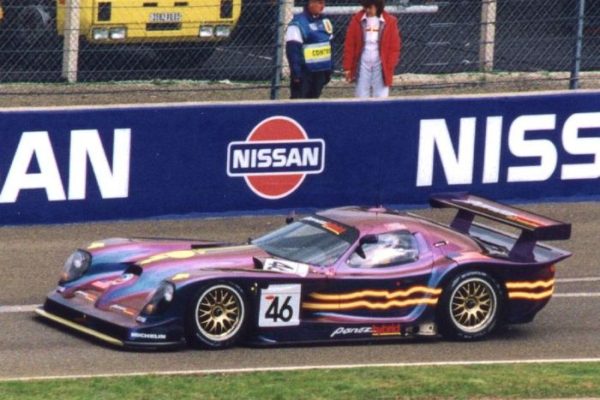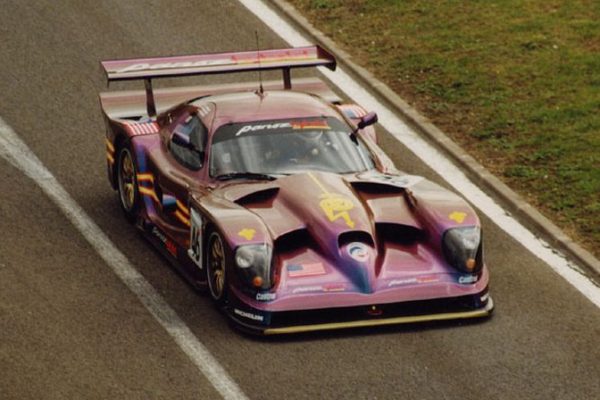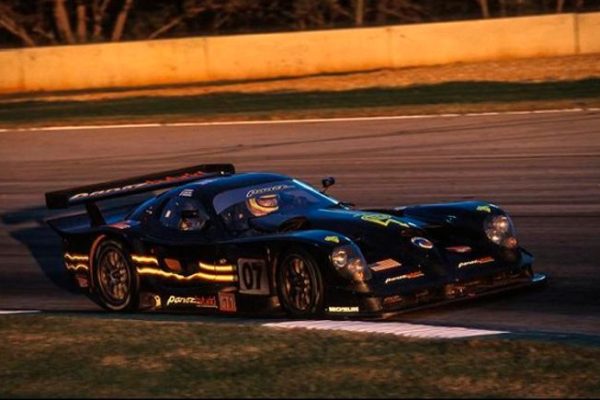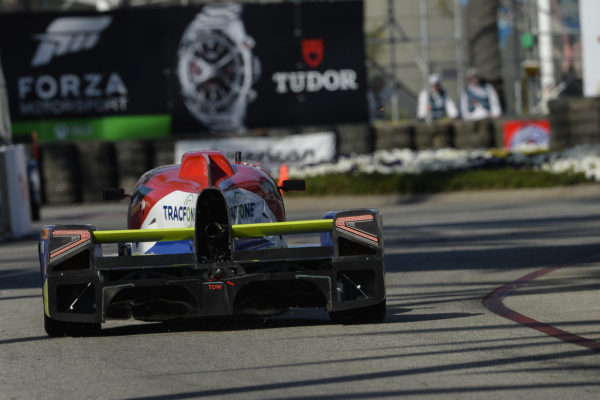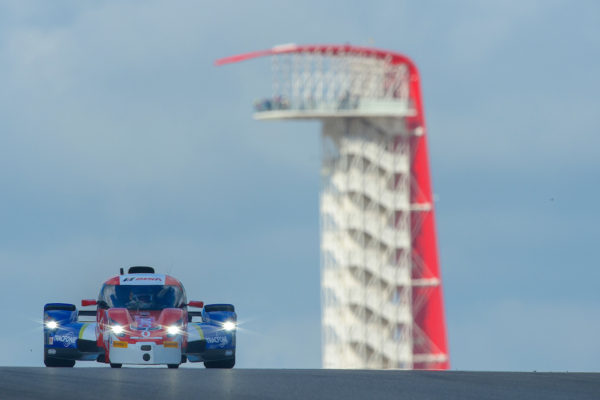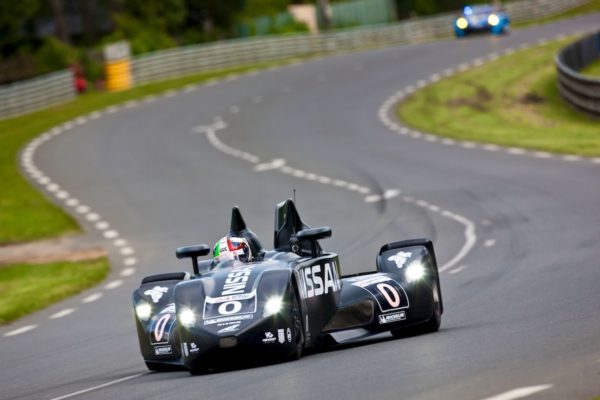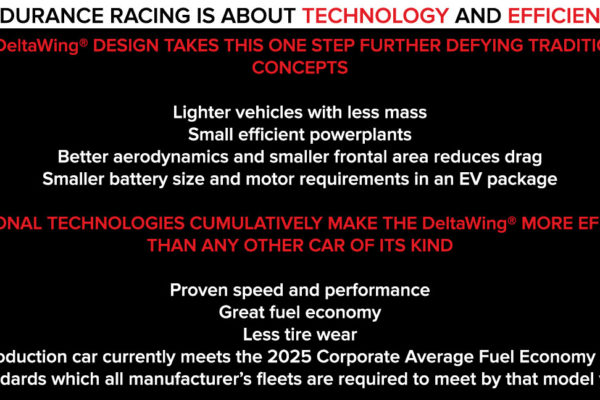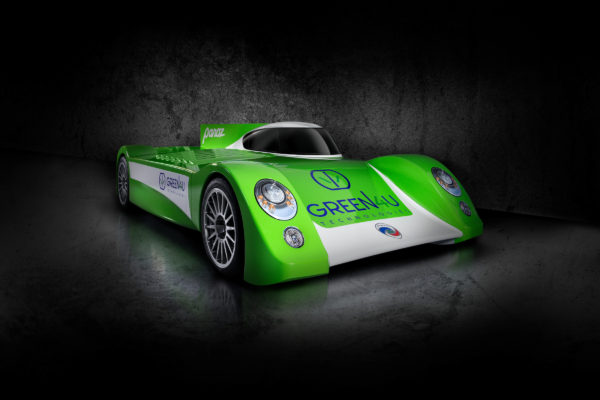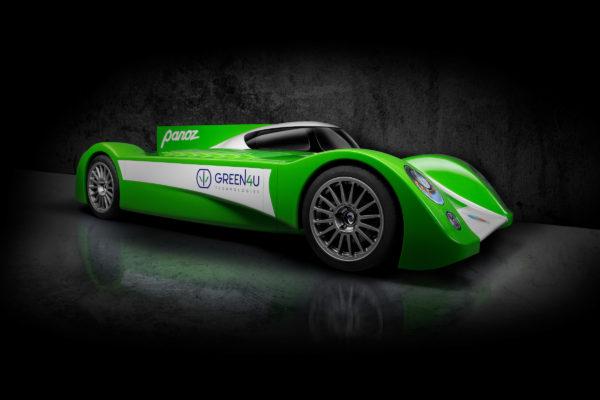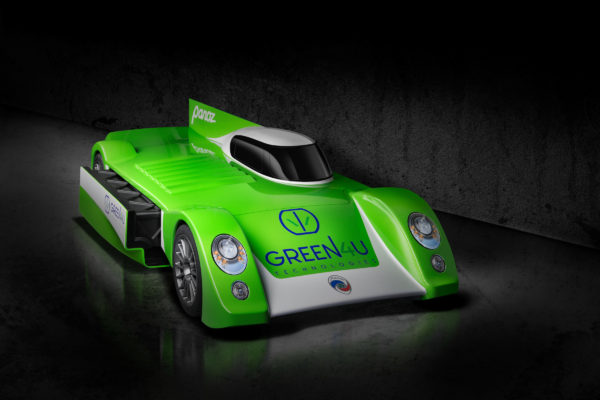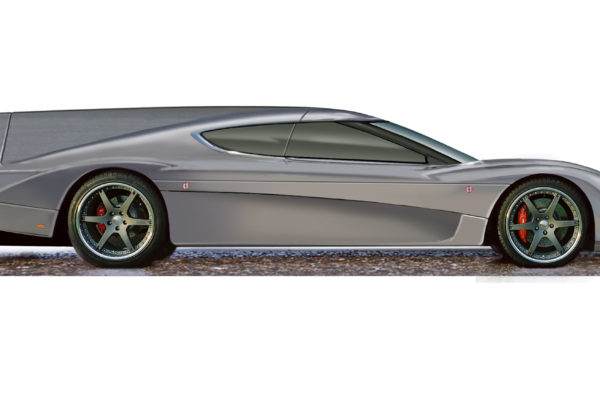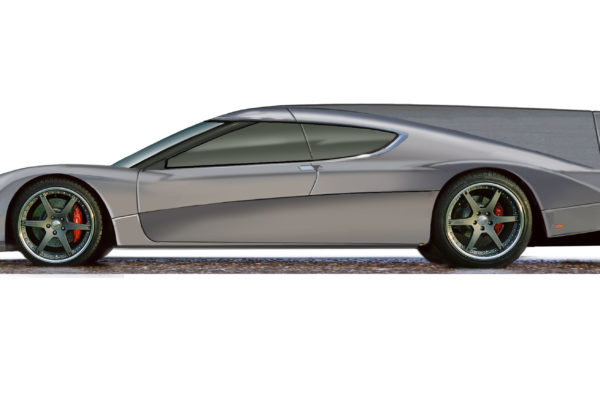You remember where you were the first time you saw it:
- At the Indianapolis Speedway with its enthusiastic designer expounding on its revolutionary lines
- Or perhaps it was at the Chicago Auto Show surrounded by curious car buffs…
- Or perhaps it was racing down the Mulsanne straight at Le Mans, a bullet in black…
But you remember!
Originally designed by Ganassi Racing Technical Director Ben Bowlby as a successor to the outdated IndyCar chassis, the DeltaWing is not just about looking different – it is about transforming the motorsports and automotive industries with radical innovation. Racer magazine called it a “game changer”.
AUGUST 2008:
As he watched motorsports viewership decline worldwide, Bowlby looked at the smaller format engine technology that was entering the forefront of the automotive industry. He realized that this technology was eminently relatable to racing fans. There had to be a way to use a small engine to create an entirely new package-one that would be more efficient and still provide the performance that a premier race car demands.
DECEMBER 2008:
The resulting design bore more of a resemblance to a fighter jet than a conventional race car with the low pressure system under the car producing downforce. The DeltaWing’s radical design reflected what was happening in the real world; cars in the mainstream automotive market were increasingly lighter, had less drag and were much more efficient. Put that whole concept together – the aerodynamics, the lighter weight (with 75% of the car’s weight in the rear of the chassis) and the efficient engine – and you have a car that uses half the fuel and half the tires of a conventional race car.
FEBRUARY 2010:
The DeltaWing is unveiled for the first time at the Chicago Auto Show. In IndyCar form, it represents a revolutionary new design to replace the Dallara chassis which has been used since 2003.
JULY 2010:
When IndyCar organizers chose to remain with the spec racing formula, Bowlby went looking for somewhere to go racing. Sports car racing was the obvious choice, so armed with an introduction from DeltaWing co-founder Don Panoz, they presented their case to the ACO (Automobile Club de l’Ouest) including club president, Jean Claude Plassart.
OCTOBER 2010 – APRIL 2011:
With the ACO’s endorsement, they (Bowlby and Panoz) knocked on the doors of some of the legends in the game; men who have also been defined by their entrepreneurial spirit and refusal to accept limitations – Dan Gurney and Duncan Dayton. Whilst Panoz took on managing director duties coordinating the plethora of pieces required to get the project off the ground, Gurney’s All American Racers built the revolutionary car at their California shop. Dayton’s Highcroft Racing would be the racing team. All they needed was a car.
JUNE 2011:
The ACO confirms the DeltaWing as the recipient of the following year’s “Garage 56”, a spot in the 24 Hours of Le Mans created for experimental vehicles.
JULY – SEPTEMBER 2011:
The drawing office is established at All American Racers (AAR) in California and construction commences. Bowlby’s original design needed some modifications. For example, the lighter front end of the car had already been updated to run on two small tires instead of the single front tire the initial model had displayed. The car also became a two-seater. The team needed partners since creating a chassis from scratch was time consuming and expensive. AAR bolted composite components onto the central tub. Nissan Europe provided the direct-injection turbocharged 4-cylinder racing engine and Michelin produced the bespoke 4” front tires. (When it had been designed for IndyCar, Bridgestone had created the specialist tires.)
The dream had become a reality! It marked the starting point of the DeltaWing as an actual car, not just an idea. From there, the development process truly began to mold the car into a proven technology, validating the “game changer” label placed on it.
NOVEMBER 2011:
Key suppliers including EMCO Gears (gearbox) and Performance Friction (brakes) are announced.
JANUARY – FEBRUARY 2012:
The first engine arrives as do the tires at AAR. The full scale DeltaWing enters the WindShear wind tunnel in Charlotte, NC to correlate the computational fluid dynamics data with actual wind tunnel numbers.
MARCH 2012:
Nissan is announced as OEM technical partner for the DeltaWing Project 56 assault on the 2012 24 Hours of Le Mans. The Nissan DeltaWing makes its public debut with demonstration runs at the 60th annual Mobil 1 Twelve Hours of Sebring.
JUNE 2012: WHAT BETTER PLACE TO DO THE FIRST RACE THAN AT THE 2012 24 HOURS OF LE MANS IN FRONT OF THE WORLD!
The Le Mans saga is well known – the DeltaWing easily achieved the 3:45 lap speed required by the ACO to make the race qualifying with a time of 3:42.612. It also received universal praise from drivers Marino Franchitti, Michael Krum and Satoshi Motoyama. Six hours and 15 minutes into the race, Motoyama was forced off the track by the Toyota prototype and crashed into the Porsche curves. Motoyama made a heroic 90-minute attempt to fix the damaged bodywork with as much help as the DeltaWing mechanics could provide from behind a fence. (Cars are only allowed to be worked on by team members when they are in the pit lane.) Devastatingly, the car could not be repaired.
The overwhelming feeling however, was a triumphant recognition that the DeltaWing had achieved its purpose. The first set of tires taken off the car during an early pit stop showed little wear. The lighter, little-tested components had also held up far better than expected.
SEPTEMBER 2012:
It took very little convincing to put another stop on the DeltaWing’s tour: The 2012 American Le Mans Series season finale at Petit Le Mans. The 10-hour American classic would give the DeltaWing the chance to finish what it had started at Le Mans – and finish it did! Running as an unclassified invitational entry, the DeltaWing not only finished the 1000-mile race, drivers Gunnar Jeannette and Lucas Ordoñez demonstrated stunning pace throughout the race to finish fifth overall.
The DeltaWing had done what it set out to do. It had proved that the car’s ground-breaking design features were absolutely competitive and that efficiency in design and power can translate to supreme speed and drivability.
FEBRUARY 2013:
It was announced that the DeltaWing would join the ALMS circuit in the premier P1 category, managed by sports car veteran David Price and engineered by DeltaWing co-designer Simon Marshall. The team moved into a race shop at the Panoz complex in Braselton which also housed Élan Technologies amongst other Panoz companies. Panoz relished the road ahead. As the team continued the DeltaWing’s development process, he like everyone else on the team believed they had a recipe for success.
“First of all, it’s a challenge because the DeltaWing is completely new”, said Panoz. “When you consider the performance of this car, it’s the performance of a hybrid but it doesn’t need batteries and an electric motor. It’s all based on aerodynamics and physics. It’s certainly very green; it’s half the weight, fuel, tire wear and horsepower yet has the same performance.”
MARCH 2013:
Under a new team name with a new livery, first up in 2013 for DeltaWing Racing was the Mobil 1 Presents the 12 Hours of Sebring with the Roadster. Testing prior to the race went well, qualifying went well and the race started well until an engine gremlin put the DeltaWing on the sidelines. Driver Andy Meyrick focused on all the gains the program had made pleased with the performance of the team though:
“Everybody on the team has put in a very good effort – the crew, the engine guys, the whole team – it’s been very impressive,” said Meyrick. “It is a real privilege to be part of this racing program. The DeltaWing is a revolutionary racing car that challenges the way we go about racing. Don Panoz is one of the key supporters of sports car racing in America and worldwide and I have full belief in the program and team that he has put together.”
MAY 2013:
Joining the team at Monterey was open wheel and sports car veteran Katherine Legge. Her first impressions of the car were positive:
“It brakes well, it turns really well and it’s really fast in a straight line. It drives like a really good racing car. It is very stable and I am also impressed with the way it handles. It is really neat to get it going.”
Monterey proved to be another milestone for the young program – Meyrick and Legge earned the DeltaWing its first podium finish in the LMP1 category
AUGUST 2013:
Next up – the highlight of the year – Road America! With a track well suited to the car’s low weight and straight line speed, the DeltaWing Roadster saw the front of the field for the first time despite the rain. Leading 16 laps (8 each), Meyrick and Legge took fifth place overall in the Orion Energy Systems 245. Legge became the first woman to hold an ALMS race lead.
STEP 1 WAS COMPLETE: THE ROADSTER WAS A SUCCESS. NOW FOR STEP 2!
SEPTEMBER – OCTOBER 2013:
In 2014, the FIA/ACO P1 rules were to change and require a full cockpit for the driver. In advance of this, the coupe version of the DeltaWing was created and made its debut at the 2013 Circuit of the America’s in September. The car received a great deal of attention from the sustainability-minded Austin media. Petit Le Mans was next. Not only the final race of the Panoz-created American Le Mans series but the final race of the season saw the hometown team on the podium once again.
JANUARY 2014:
In 2014 the team entered the DeltaWing coupe into the new TUDOR United SportsCar Championship. The new series was the combination of the American Le Mans Series and Grand-Am to form one cohesive sports car racing series run by IMSA.
The Rolex 24 at Daytona was the first stop on the calendar for drivers Legge and Meyrick that year. Together they logged 288 laps and 1,035 miles. The team then returned to the Mobil 1 Twelve hours of Sebring. The coupe driven by Meyrick led for the first time, pacing the field during a lengthy caution period and two laps of green before surrendering the top spot.
JUNE 2014:
The DeltaWing coupe also led at Watkins Glen before it’s return to Road America. Once again showing its prowess on the four-mile road course remaining with the leaders throughout the two-hour, 45-minute race. The team’s fuel strategy went for naught when six caution periods negated the coupe’s fuel consumption, but walking away with a sixth-place finish was still a good end to an eventful day.
OCTOBER 2014:
The season ended on a high note at the team’s home track of Road Atlanta with the Petit Le Mans race weekend. Drivers Katherine Legge, Andy Meyrick and Gabby Chaves navigated 395 laps in the grueling 10-hour endurance classic on their way to a fourth place finish and the highest finish to date for the DeltaWing coupe.
JANUARY 2015:
The DeltaWing team started back at Daytona in 2015. Legge, Meyrick and Chaves were joined by 4-time Rolex Sports Car series champion Memo Rojas. International entrepreneur Carlos Slim Helú’s telecommunications divisions Claro and TracFone joined as sponsors. At the Roar before the 24, the coupe showed tremendous speed and performance and the year looked set to start well. Unfortunately following this, transmission and other issues plagued the start of the year causing the coupe to end many of the earlier races ahead of schedule.
JULY 2015:
By the Canadian Tire Motorsport Park race, the team had resolved the issues and Legge and Rojas drove an exciting and eventful race to finish eighth. A sixth-place finish at Road America followed and the coupe was looking all the more competitive.
SEPTEMBER 2015:
Next up was COTA and the team’s strategy had them up at the front leading the race for 4 laps. A seventh-place result and three consecutive finishes had the team confident that they could put on a good show for the home crowd at Road Atlanta.
OCTOBER 2015:
Keeping up with the leaders in first practice it looked possible the DeltaWing was on track for a podium. A weather-related incident meant it was not to be, but given the circumstances the team were pleased with performance.
WITH STEP 2 SHOWING SO MUCH PROMISE, IT WAS TIME TO REVEAL STEP 3!
As the 2015 season drew to a close at Petit Le Mans, it was time to look forward to the new season and new opportunities: The Panoz DeltaWing GT! The new GT was unveiled for the first time to the public at the team’s hometown track, Road Atlanta.
JANUARY 2016
The team returned to the IMSA WeatherTech SportsCar Championship with a patriotic new livery under the name Panoz DeltaWing Racing! The driver line up includes Katherine Legge and Sean Rayhall as full season campaigners and Andy Meyrick returns for the endurance races.
Taking the gains they made towards the end of the previous season, the team showed tremendous pace at the ROAR Before the 24. Forced to make a strategic decision due to weather conditions the team went from last to first within the first hour of the Rolex 24 Hours of Daytona with Katherine Legge navigating her way through the traffic. Between Legge and Andy Meyrick the coupe held on to P1 on and off for the first four hours of the race, making history and impressing fans and the motorsports industry alike.
APRIL 2016
The team continued to grow showing improved reliability during the next race, the Mobil 1 Twelve Hours of Sebring in February. Working on speed and set up, the team put on an impressive performance, leading the race in part and finishing in the Top 5 at Mazda Raceway Laguna Seca at the beginning of May.
JULY 2016
Consistent reliability and speed allowed the team to gain seventh place results at the following two races, the Sahlen’s Six Hours of the Glen and the Mobil 1 Sports Car Grand Prix.
SEPTEMBER 2016
Strong performances at the following shorter races meant the team were very hopeful of a strong performance at their home track and final race at Road Atlanta. Achieving the fastest lap of the race weekend, the DeltaWing proved it’s competitive ability.
THE DEVELOPMENT OF THE DELTAWING TOOK PLACE UNDER AN UNPRECEDENTED MICROSCOPE, WITH EACH STEP OF ITS PROGRESS OBSERVED BY AN INTERNATIONAL AUDIENCE. THE EYES OF THE MOTORSPORTS WORLD – AND TECHNOLOGY ENTREPRENEURS AROUND THE GLOBE – WERE ON THE DELTAWING AS IT CONTINUED TO IMPRESS. AS AUTOMOBILE MAGAZINE SAID WHEN NAMING THE DELTAWING ITS 2013 RACING CAR OF THE YEAR “THE GENIE IS OUT OF THE BOTTLE AND WE INTEND TO EMBRACE IT.”

